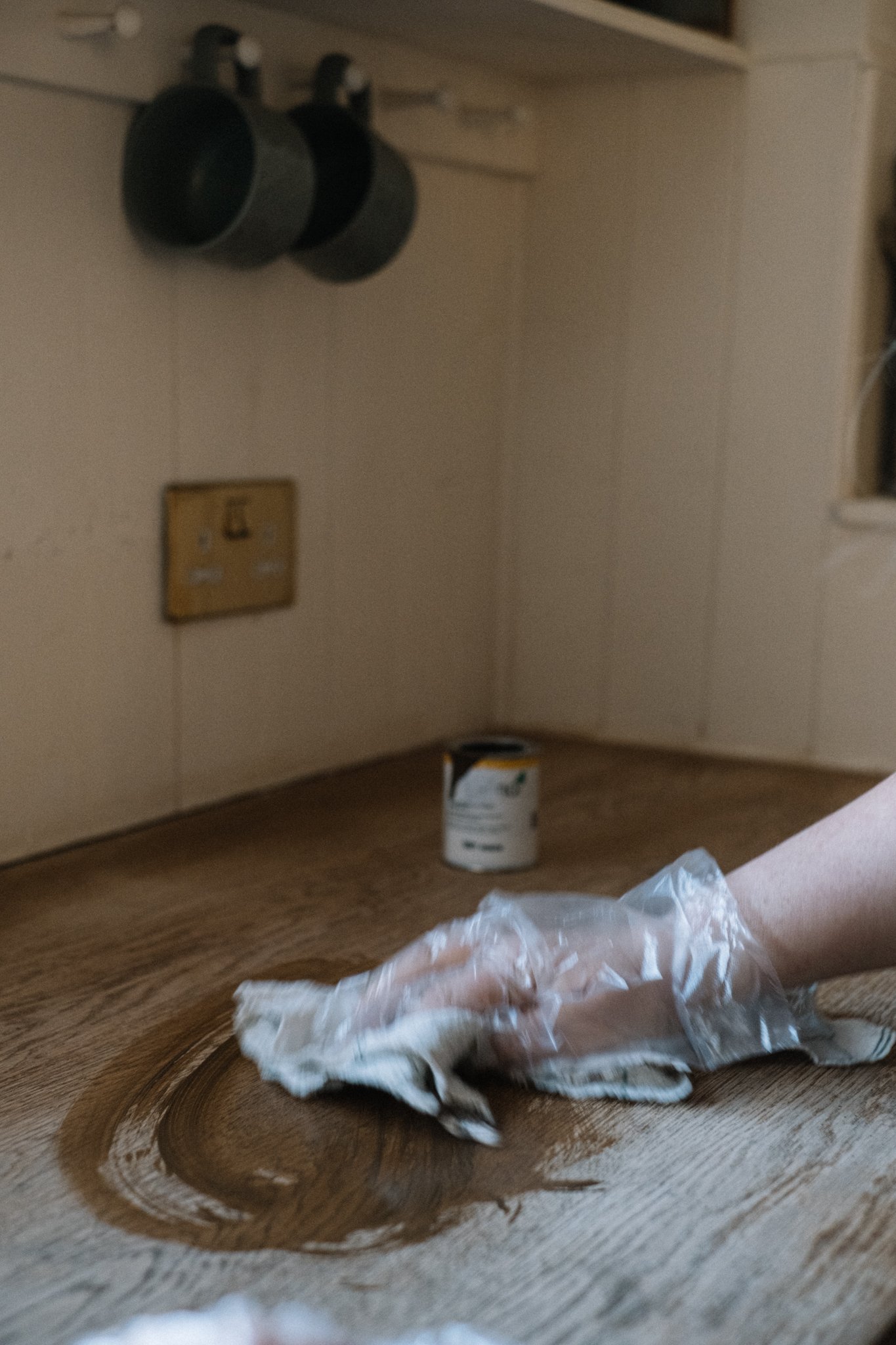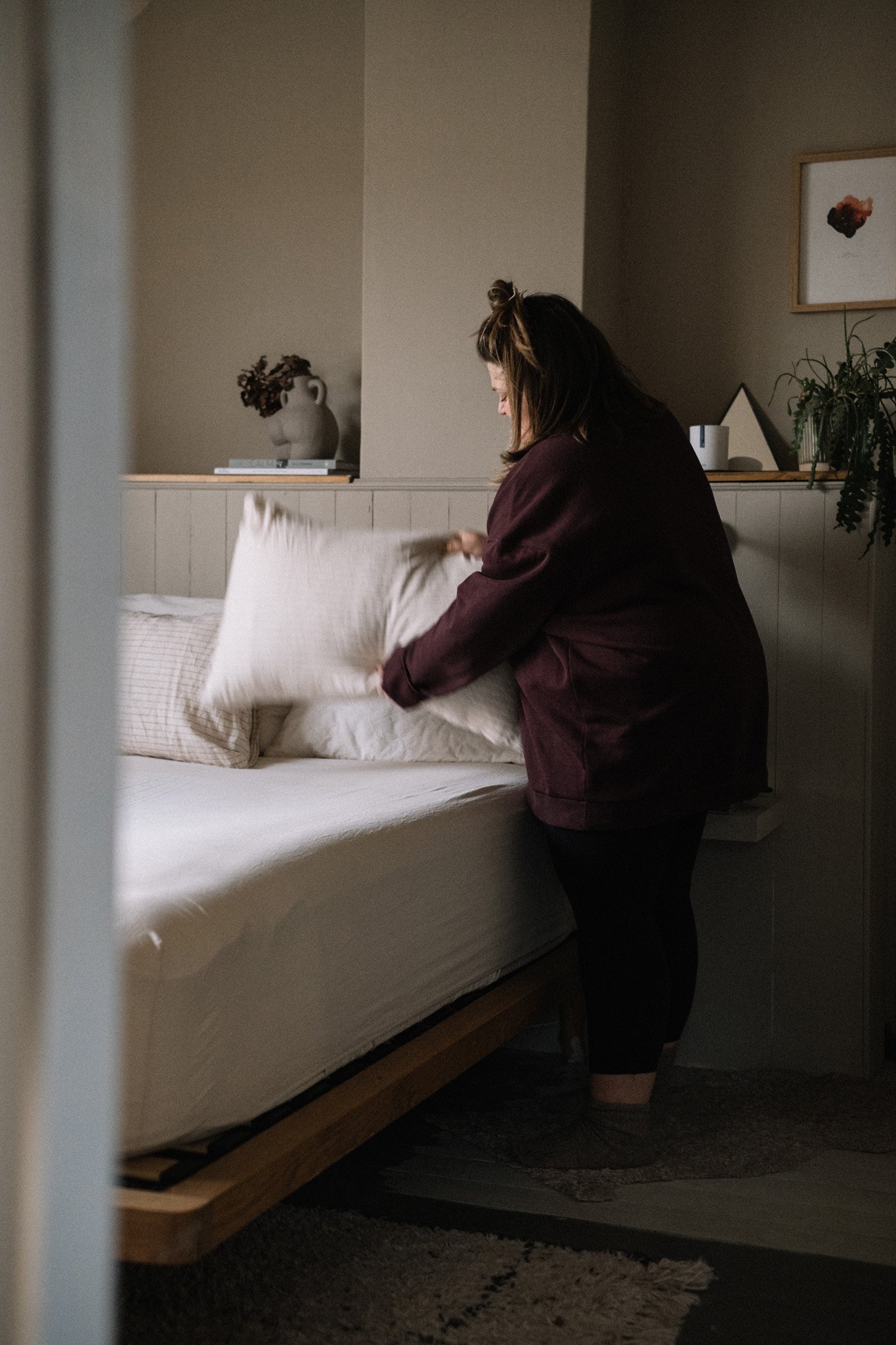Interiors: How to Decorate More Sustainably.
Gone are the days that the only access we have to paint is a few rows of Dulux in B&Q. We are now spoiled for choice for paint brands and everyone has their own go to. But we also have so many trends that come and go and people changing up their rooms for rest social media content on a regular basis and it’s never been more important to be mindful of how we decorate.
Thankfully, there are a lot more options on the market these days that allow us to choose a more eco friendly approach to our decorating. And while these eco paints might be a tad more expensive, they are longer lasting, easier to use, better for our health and for the planet. By now a lot of us know about VOC’s (Volatile Organic Compounds - toxic to us and the planet) that can include formaldehyde and heavy metals. These are often found in paint but also in a lot of chipboard furniture and MDF. There have been rumours going around for years that MDF will be classed in the same way as asbestos in the future.
And there are ways in which we may not realise our enthusaism for all things home is having. For instance, the rise of upcycled furniture means that we’re adding another layer of toxicity when the furniture becomes waste. And there are health concerns too about the rise of indoor pollution as houses get more heat efficient but less ventilated.
I very much take the approach of do what you can - renovating a house solo on a tiny budget means I’ve made considered choices but not always my preferred ones. I budgeted for eco friendly paint but very quickly found I would need more than expected so I’ve used not so eco friendly brands and gifted products but have prioritised premium, low VOC paint for painting over new plaster.
Be mindful of materials
There’s a huge market for panelling, tongue and groove and cladding at the moment. Where you can, consider whether you really need to use MDF as it’s production is energy heavy and there are often a number of toxic materials in it. Consider if you can go for wood instead. Be careful of how the wood is produced - all wood used should carry the FSC ‘tree tick’ mark. Also look out for whether the wood has been treated as wood treatment can also be full of VOC’s.
Look after your kit
Paintbrushes often have plastic handles and synthetic bristles. These can take hundreds of years to bio degrade and are hefty on planet impact in their production too. Where possible try and opt for natural, wood handled brushes and always look after your kit by cleaning it throughly after you’re finished painting so that is all lasts you for many, many years saving yourself money and reducing your impact.
Consider floor coverings
Carpets can contain a number of toxins that will continue to be released for as long as they’re in your home. The manufacturing process is also impactful to the planet and carpet generally only lasts for ten years so where possible avoid carpet. There are plenty of alternatives out there and as with most things, it’s tricky to be 100% sustainable, especially when on a budget. But by choosing a product with longevity and that isn’t a heavy trend product you can have less impact. For some ideas on planet friendlier flooring check out this article.
Paint Brands To Consider
As is typical of me I’ve been down a bit off a rabbit hole of late researching brands and trying to make decisions based on affordability/ease of use/eco credentials and aesthetic. Because of my job as an interiors photographer it’s important to me that I can visualise the paint in my home and I like to be able to view contemporary images that strike the right tone.
Without a doubt, the best customer experience I had from start to finish was Atelier Ellis. This Bath based brand is definitely for those of us that hold attention to detail to value. I have to admit that I found it hard getting a sense of the colours on the website so I invested in their hand painted colour sheets and some colour cards. The cost was worth the experience alone - an absolutely beautiful package came through the post and after I deliberated I finally settled on a colour. The paint was a dream to use, didn't smell of anything and all their formulations are bio based. As someone who is neutral through and through this brand is the one for me - their colours just speak to me. To see their full ingredients/production list go here.
For those that love a bit more colour and option, Lick are excellent. As a B-Corp they have the credentials to trust in them and they are really making trial blazing moves in minimising waste. All of their tins and packaging are recyclable. I had an outstanding experience with them over WhatsApp while trying to pick a colour for my living room - I sent them a video and they came up with some excellent suggestions. Big fan.
I haven’t used Little Greene yet - I’m not sure why, I just seem to get bamboozled when I go on their website. But this family owned independent brand are purveyors of mostly zero VOC paint and it’s all vegan. They have one of the highest eco ratings in the industry.
I’ve been using Earthborn testers on photography backdrops for a few years now as it is sold in the wood recycling yard that used to be round the corner from me in my old flat. Founded in 2022, I tend to think of them as one of the pioneers of change on paint offerings. But when I poke around their website I can’t actually find much info on what makes them eco friendly but it’s clear they are highly breathable and have minimal planet impact.
Graphenstone recently launched a collection with Michelle Ogundehin which contains some beautiful colours. Graphenstone are really clear on there site what makes their paints so eco friendly: a combination of low to zero VOC’s, production values and recyclable packaging. But also their paint is made from lime paste which absorbs cO2 as they cure which is pretty impressive.
Also, Lick have started selling their products in B&Q including their recycled dust sheets which are a great price and MASSIVE. I really love them.
Weigh Up Your Options
Got a UPVC door you hate? It’s better on your pocket and highly probable it’s better for the planet to use less sustainable paint than buying a new door. Or perhaps you have a piece of furniture that is good only for the tip without a coat of paint? Being kinder to our planet is always nuanced. I use Rust-oleum for any project that needs a primer as they have primer built into their products meaning you don’t need a separate one. Better for your pocket and generates less waste. For painting radiators, UPVC, furniture and floors, I always opt for their products on these types of projects.
Dispose of paint and tins properly
Paint must never be poured down the sink or put in your general bin. Facebook groups are great for sharing half empty tins of paint. Most household waste centres will recycle metal tins of paint but plastic ones can’t be recycled. You’ll need to make sure the paint has hardened and disposed of and if you have tins with paint left in you could donate to Community Repaint. See more from B&Q here.
Sharing is caring.
Pin me to Pinterest.
Hit the pin button to the top left of the image as you hover to share to Pinterest.




















A very honest update from me about changes in how I’m feeling about my home, how the past few months have been and some big news.